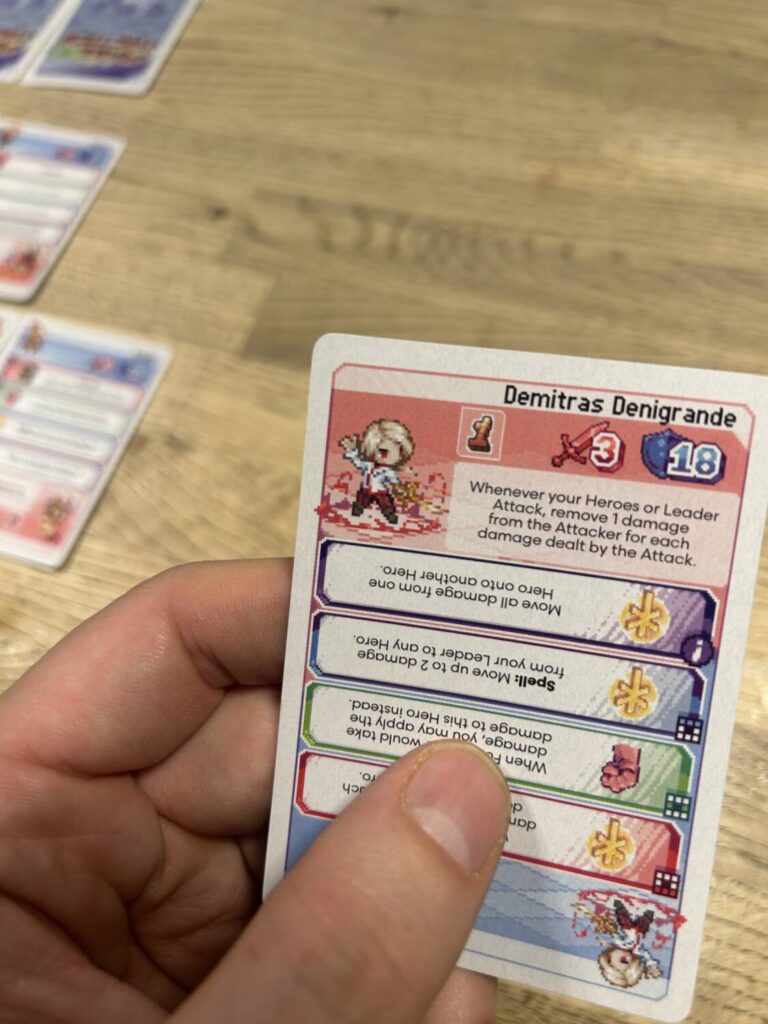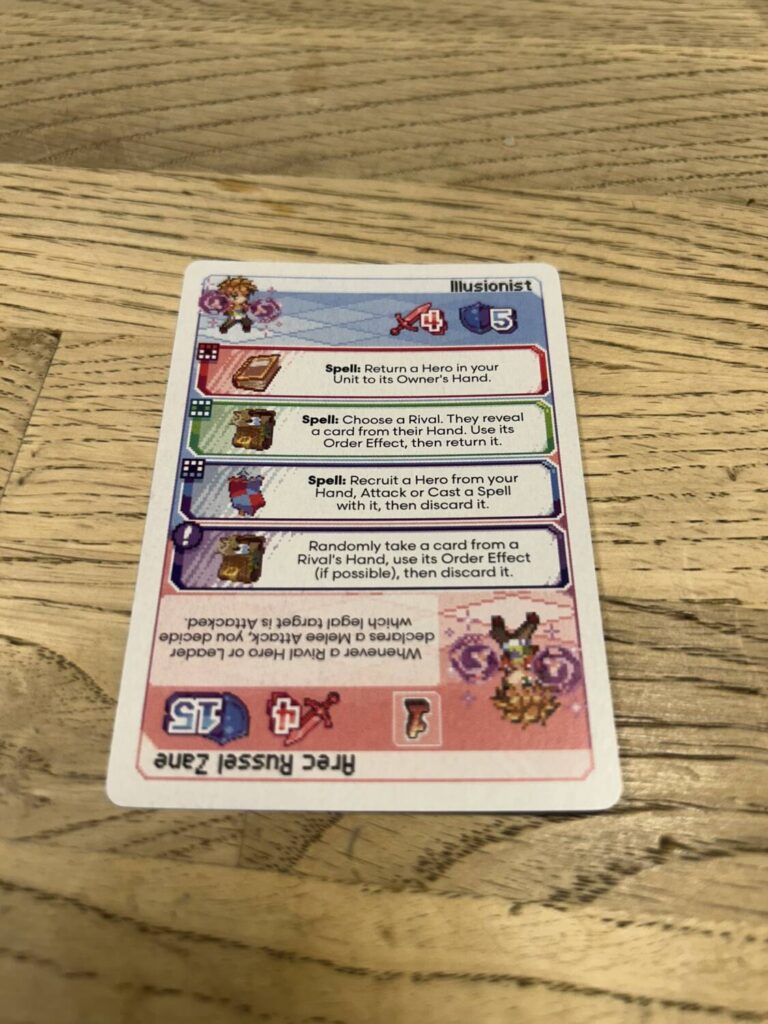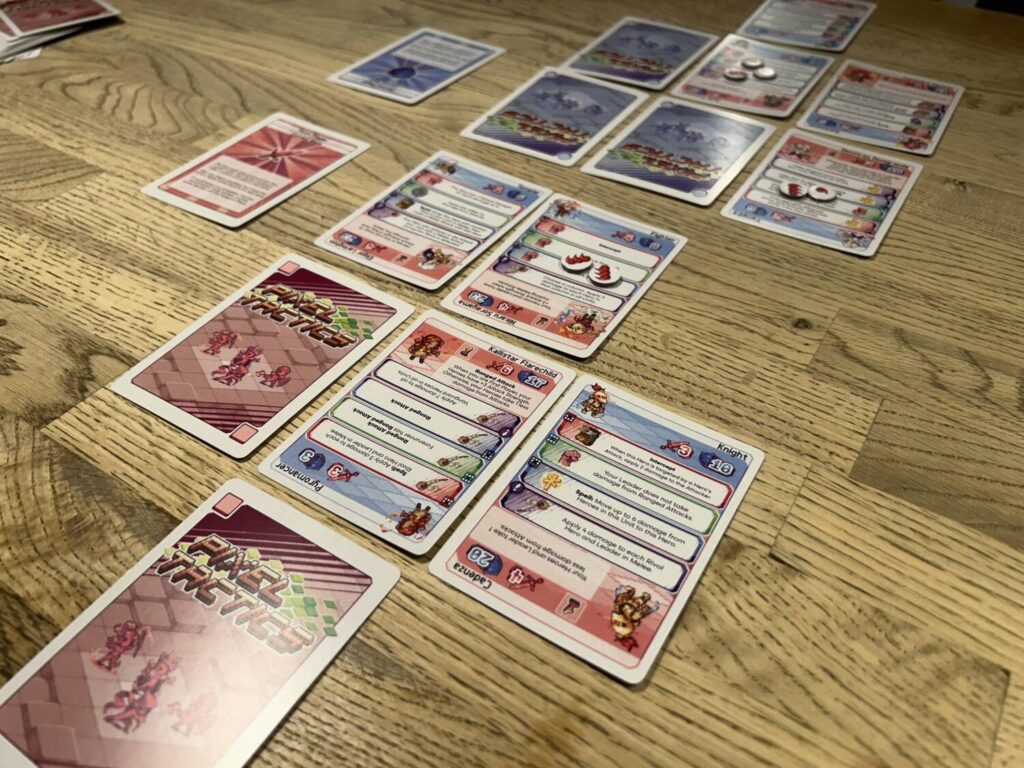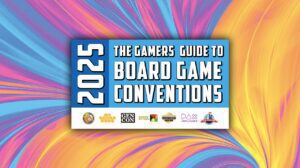Disclosure: Meeple Mountain received a free copy of this product in exchange for an honest, unbiased review. This review is not intended to be an endorsement.
From 2003 to 2006, I invested so much time in Final Fantasy Tactics Advance that I am tempted to open this review with a bias disclaimer. I haven’t played video games regularly since 2014, and rarely feel any desire to do so, but show me a game with the Final Fantasy Tactics aesthetic and I cannot help but want to dive in.
The aesthetic specifically is a pretty big part of it. Despite growing up squarely in the age of the Playstation and N64, I hold little attachment to the look of that era. It must be hard for those games and consoles, to be forever preserved in video game history as the awkward teen photos. 8-bit? How cute! I love when they hit 16-bit, they start to really develop a personality. 64-bit, you know, look, there are a lot of changes going on.
In my heart of hearts, 32 will always be the correct number of bits, and it takes an awful lot of inner fortitude to say no to a top-down isometric view. The games that most tempt me to return to video games are the Octopath Travelers and Into the Breaches of this world. They know what they’re doing, and they know who they’re for. They’re for me.

The same is certainly true of D. Brad Talton’s excellent Pixel Tactics.
I want to be clear here. I was not a mark going into my first game of Pixel Tactics. This review need not be taken with a grain of salt so large only Atlas could lift it. I went into this two-player card game deeply suspicious. Thanks to fifteen years of Geek Culture-as-Mass Culture, nearly two decades of watching the cultural touchstones I grew up with get bled for all they’re worth, and thanks to a host of industries that exist to do nothing more than cater to the basest desires of the masses, I am openly hostile towards naked appeals to nostalgia. This heart is dead, you hear me? D. E. A. D. I sat down to my first game of Pixel Tactics muttering about this patronizing [redacted].
Then I started playing.
Information Overload
As you might expect from a game with the word “tactics” in its title, Pixel Tactics is all about combat. While there are a number of simple actions available to you every turn, the gist is that you play and activate units in your 3×3 battle formation.
The most important card is your Leader, who sits at both the metaphorical and literal center of your efforts. This card, chosen from your starting hand during setup, is both your queen and your king. It is your most powerful card, granting an ability that will drive just about every decision you make, and it is your health bar; you lose when your Leader is killed.
Early games of Pixel Tactics can be rife with information overload, and that’s especially true during setup. You start the game with five cards in hand, and you have to pick one to be your Leader. You aren’t just weighing Leader against Leader, though. Would that it t’were. Every card has five possible abilities, and they all need to be carefully considered in concert with one another.

In addition to the Leader ability, each card offers three abilities that correspond to different positions in the grid. Broadly speaking, if you place a character in your front line, the Vanguard, they will have an offensive or defensive ability. Characters in your Flank, the two spaces on either side of your Leader, often provide buffs or healing spells. Characters in the Rear tend to offer a mix of ranged attacks and funky li’l support spells.
The fifth and final power is an Order, which is activated by discarding the card from your hand. If you want to be competitive, you have to consider all five powers on all five cards before choosing your Leader. Or, alternatively, you could pick whichever Leader sounds coolest and see what happens. I’ve had pretty good success with that approach so far.

Waves of Mutilation
Games with significant upfront decision-making often feel prescribed after that initial deluge, but that’s not the case with Pixel Tactics. Each round consists of three turns for each player, two actions per turn. The first turn is the Vanguard Wave. You have two actions with which you can attack, draw cards, play cards, activate cards, shift cards around in your tableau, anything you want really, so long as what you’re doing is being done in the Vanguard. Then your opponent does the same thing. Each player subsequently takes two actions with their Flank, and finally two actions with their Rear.
At this point, the starting player switches.
That doesn’t sound terribly exciting. Lots of games switch starting players. Not an unusual thing. In Pixel Tactics, it’s huge. The first time it happens, the ebb and flow of the game snaps into focus and the larger strategies start creaking into motion. It isn’t as simple as attacking on turns when you’re first and preparing for next time when you’re second, though there’s certainly an element of that. The turn order impacts everything. What you prioritize, when you decide to do it, what units you play, what units you hold onto, it all extends out of where you sit in the turn order. It’s a bit of a wonder, frankly.
Your action economy is tightly throttled. Turns where you know exactly what to do with both of your actions are few and far between. I like it that way. Your card economy is also tight. Because cards are so limited, and because the Order actions are so powerful, there are few things more threatening than an opponent who feels comfortable enough to spend a whole turn drawing two cards. Sun Tzu would probably love this game. The fact that the whole thing takes about half an hour is the icing on the cake.
Pixel Tactics won me over with its tense, deep, rewarding play. It matches not only the UwU look of the source material, an aesthetic I hold dear, but it also matches the feel. If anything, the temperature has been turned up. I don’t remember Final Fantasy Tactics Advance ever presenting me with a situation so seemingly impenetrable that I had to spend several minutes agonizing over my next move. The amount of upfront information means this isn’t a game for everyone, but for those who are inclined to give it the time, Pixel Tactics delivers an enormous and satisfying experience given its size and price point. I still don’t feel any need to return to video games, but Pixel Tactics is a great excuse to dip my toes back in from time to time.










